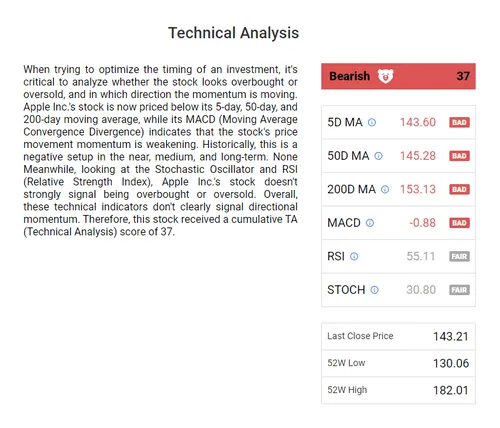A variety of templates. Check whether the platform has a wide selection of built-in strategies that are suitable to suit different types of trading (e.g. day trading, swing trading, or long-term investment).
User-friendliness: Consider how easy it is to use and alter these templates to meet your needs.
Performance historical data. Check if the platform contains historic performance data for previously built strategies.
2. Assess Custom Strategy Creation
Drag-and-drop tools: Choose platforms with drag-and-drop interfaces which allow you to easily create personalized strategies.
Coding Options: If you are a skilled user, be sure that the platform is able to support custom coding.
Flexibility – Make sure the platform you choose allows you to establish rules for entry and exit, parameters for risk management, as well as other essential aspects of your strategy.
3. Check for Backtesting Capabilities
Historical data. Check if your platform can supply enough historical data to backtest your strategy.
Customizable settings: Be sure that you are able to alter the parameters when backtesting.
Performance metrics: Make sure the platform offers detailed measures of performance (e.g. Win rate Sharpe Ratio, Drawdown) when backtesting strategies.
4. Evaluate Real-Time Strategy Testing
Paper trading: Check that the platform offers simulation and paper trading modes to test strategies in real time without risking your capital.
Live testing: Determine whether you’re able to test your strategies in real markets using small amounts capital.
Real-time Adjustments: Test if you’re able to adjust your settings in real time in response to the market conditions.
5. Evaluate the level of integration based on technological indicators
Check if there is an indicator library.
Custom indicators It is possible to develop or import your own indicators which you can use for your strategies.
Combinations of indicators: Check if the platform allows combining multiple indicators to create more complicated strategies.
6. Check for Risk Management Tools
Stop-loss/take-profit: Ensure the platform allows you to set stop-loss and take-profit levels within your strategies.
Size of the position. Consider whether you could establish rules for the size of positions (e.g. percentage or a fixed amount) and manage the risk.
Risk-reward-ratio: Verify the platform’s support for setting risk/reward ratios for individual trades or strategies for trading.
7. Evaluate Multi-Asset Strategy Support
Asset classes: Check that the platform can handle different asset classes, such as stocks, ETFs and options.
Cross-asset strategies: See whether you can develop strategies that involve various types of assets (e.g., pairings trading, hedging).
Market coverage: Make sure the platform is covering the markets that you’re interested (e.g. US and international markets, copyright and more.).
8. Assess Automation and Execution
Automated trading – Make sure that the platform can be capable of automating trading strategies based on established rules.
Types of orders: Check to see if the system permits different types of orders (e.g. limit and market) when executing a strategy.
Latency: Verify whether the platform is able to execute trades with minimal latency particularly for strategies with high frequency.
9. Check for Strategy Optimizing Tools
Parameter optimization – Ensure that the platform has tools to optimize the strategy parameters.
Machine Learning Integration: Find out whether a platform is able to integrate machine learning to optimize and refine the strategy.
Analyze scenarios: Determine if the platform permits you to test different strategies in various market scenarios (e.g. bear bull, bear volatile).
10. Review User Feedback and Community Support
User reviews: Study user feedback to gauge the effectiveness of the platform for strategy and personalization.
Community forums: Find out whether the platform hosts an active community in which users share and discuss custom strategies.
Support resources – Make sure that the platform includes instructions and documents for users to develop and enhance strategies.
Bonus Tips
Trial period: Test the platform’s customization features for free with a trial or demo.
Scalability: Ensure the platform can cope with increasingly complex strategies in your trading expands.
Support for customers: See whether you can seek assistance with strategy-related questions or issues.
By following these tips you can assess the capability of AI platforms for analyzing and predicting stocks to customize strategy. This will allow you to choose a platform that aligns with your goals in trading and lets you develop and refine strategies. A platform that has powerful customization options will allow users to be able to change market conditions and boost the performance of your trading. View the top trading ai bot for more tips including ai trading tools, investing ai, ai based trading platform, incite, coincheckup, best stock analysis website, trading ai bot, trader ai review, best artificial intelligence stocks, ai trading software and more.

Top 10 Tips On Assessing The Feasibility And Trial Of Ai Analysis And Stock Prediction Platforms
Analyzing the trial and flexibility choices of AI-driven stock prediction and trading platforms is crucial in order to determine if they can satisfy your requirements prior to committing to a long-term subscription. These are the top ten suggestions to think about these aspects.
1. You can sign up for a free trial.
Tip: See if there is a trial period available to test the features and capabilities of the system.
The reason: The trial is an excellent way to test out the platform and test it without any financial risk.
2. Limitations on the Time and Duration of Trials
Verify the duration of the trial and any limitations.
The reason: Knowing the constraints of a trial can help you decide if it offers a complete evaluation.
3. No-Credit-Card Trials
Find trials for free that don’t ask you for your credit card’s information upfront.
Why: This reduces any risk of unforeseen charges and makes the decision to leave more simple.
4. Flexible Subscription Plans
Tip: Determine if the platform has flexible subscription plans that have clearly established price levels (e.g. monthly quarterly, annual).
Why flexible plans offer you the choice of choosing the amount of commitment that meets your requirements and budget.
5. Customizable Features
Find out if the platform provides the ability to customize options, like alerts and levels of risk.
Customization lets you customize the platform to suit your desires and trading goals.
6. Simple cancellation
Tip: Find out how easy it is for you to downgrade or cancel the subscription.
The reason: A simple cancellation process can ensure you don’t get stuck on plans you don’t want.
7. Money-Back Guarantee
Tip – Look for platforms with a guarantee of money back within a specific time.
This is to provide an additional security net in the event that the platform fail to meet your expectation.
8. Access to all features and functions during Trial
Tips: Ensure that the trial allows access to all the features, not just the restricted version.
You can make a more informed decision by trying the whole functionality.
9. Support for Customers During Trial
Tip: Evaluate the quality of support available throughout the trial time.
Why: Reliable support ensures you’ll be able to solve issues and maximize the trial experience.
10. Post-Trial Feedback System
Find out if the platform asks for feedback from users following the test to improve its service.
The reason: A platform that is characterized by a an extremely high level of user satisfaction is more likely than not to evolve.
Bonus Tip! Scalability Options
If your trading activities increase and you are able to increase your trading volume, you might need to upgrade your plan or add additional features.
By carefully assessing these options for flexibility and trial You can make an informed decision about whether an AI trading and stock prediction platform is the best choice for your requirements prior to making a financial commitment. Read the best stock market software for blog examples including best ai stock, using ai to trade stocks, investment ai, ai trading app, trader ai intal, stock analysis websites, chatgpt copyright, ai stock price prediction, investing ai, stock market software and more.
